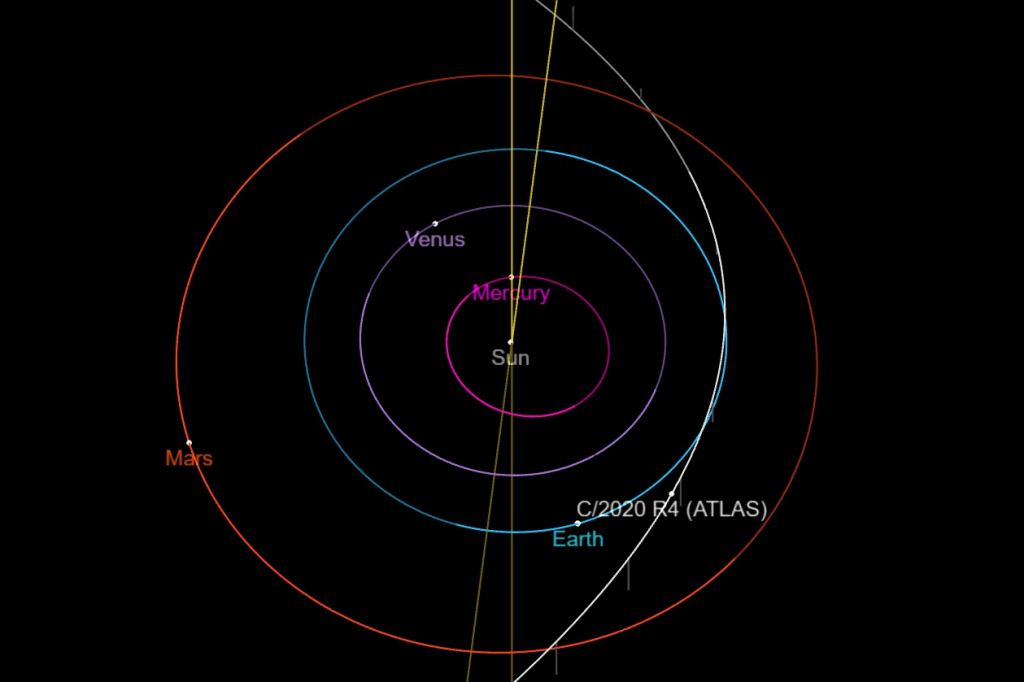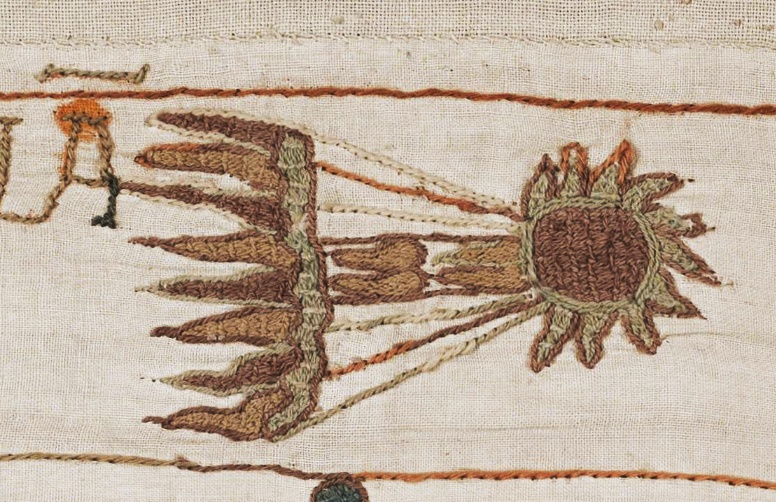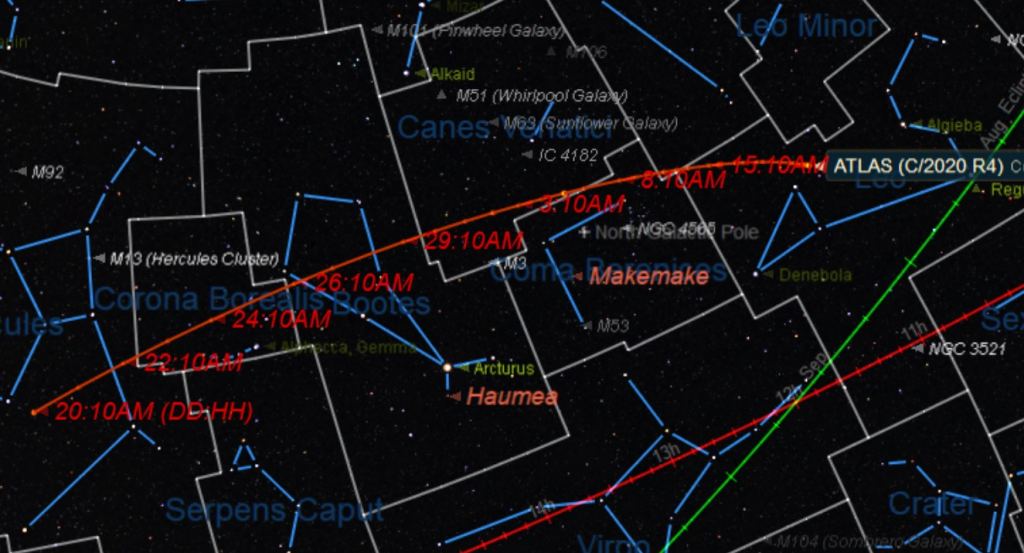The coming weeks are a great time to catch comet C/2020 R4 ATLAS… while you can.
Looking to do some springtime astronomy? With temperatures warming up in the northern hemisphere in April through May, galaxy season is upon us. At dusk, the area in the Bowl of Virgo asterism rising in the east is rife with clusters of galaxies that spill over into the adjacent constellations of Coma Berenices and Boötes…
But this May, keep an eye out for a fuzzball interloper that is not a galaxy: Comet C/2020 R4 ATLAS.
Discovered on the night of September 12th, 2020 by the prolific automated Asteroid Terrestrial Impact Last Alert System (ATLAS) sky survey based in Haleakala (ALTAS-HKO) and Mauna Loa (ATLAS-MLO) Hawaii, R4 ATLAS has proven to be an over-achiever. In fact, it was never initially predicted to top +10th magnitude… until a surprise outburst in late December 2020 shot it up 100-fold in brightness, from +18th to +13th magnitude. As of writing this, it sits at about +8th magnitude ‘with a bullet,’ and may top out +7th magnitude this week. Clearly, this is a dynamic comet with lots going on… and one more well-placed outburst this week could nudge it into naked eye territory.
The comet reached perihelion on its 957-year orbit on March 1st, 2021 at 1.029 Astronomical Units (AU)(95.7 million miles/154 million kilometers) from the Sun. Had the comet dropped by in August, its passage versus the Earth would have been four times closer.

This once-a-millennium orbit also means that the comet last popped by in the mid-11th century, right around 1064 AD. Though R4 ATLAS—like most fainter comets of the pre-telescopic era—went unrecorded, another famous denizen of the solar system did make a historic appearance just a few years later: Comet 1/P Halley, in 1066 AD. Not only was this apparition of the most famous of all comets captured for posterity on the Bayeux Tapestry, but its appearance was around the same time as the death of Harold II during the Battle of Hastings and the ascendancy of William the Conqueror (a bad omen for Harold, but a good one for William).

The comet ends the month of April in the constellation of Hercules the Hero. Comet R4 ATLAS is now well placed for observation, ending April into early May high in the east in the ‘Spring Realm of the Galaxies’ away from the plane of the Milky Way and the ecliptic plane at dusk, getting higher as the night goes on. Late May sees the comet high to the south at dusk.
Here’s a brief list of ‘dates with celestial destiny’ for the comet, month by month:
April
23 – Passes nearest to the Earth, at 0.464 AU( 43.2 million miles/69.5 million kilometers) distant.
23 – Crosses into the constellation of Corona Borealis, the Northern Crown.
25 – Passes less than one degree from the +4th magnitude star Theta Coronae Borealis.
26 – Crosses into the constellation of Boötes the Herdsman.
27 – Reaches opposition, at 180 degrees elongation from the Sun.
30 – Crosses into the constellation of Canes Venatici the Hunting Dogs.

May
1 – Photo-Op: passes just five degrees from the +7th magnitude globular cluster Messier 3.
7 – Passes into the constellation Coma Berenices (Berenice’s Hair).
11-12 – Nicks the corner of the constellation Ursa Major (the Great Bear).
13 – Crosses into the constellation Leo the Lion.
June
1- May drop back down below +10th magnitude.
From there, Comet C/2020 R4 ATLAS heads back out of the inner solar system, towards a distant aphelion 193 AU (18 billion miles/29 billion kilometers) from the Sun in 2500 AD. That’s almost five times the average distance from the Sun to Pluto. The comet won’t pay us a visit again until out in 2978 AD.

Will R4 ATLAS brighten or fizzle? You just never know with comets. While +8th magnitude places R4 ATLAS in binocular territory, we’ve also got the waxing Moon reaching Full on April 27th to contend with. Hunt for R4 Atlas the way you would a moderately bright globular cluster… sweep the suspect field with binoculars or a telescopic wide-field of view, until a fuzzy patch becomes apparent. Unlike a globular cluster, however, a comet like R4 ATLAS will stubbornly refuse to resolve into individual stars upon focusing in. This contrasting comparison was one of 18th century comet hunter Charles Messier’s legendary inspirations for drawing up his first catalog of deep-sky objects, as a way of marking the ‘false comets’ of the sky.
If skies are clear, be sure to check out Comet C/2020 R4 ATLAS, one of the first good comets of 2021.
Lead image: Comet C/2020 R4 ATLAS from April 11th, 2021 courtesy of Michael Jäger.


